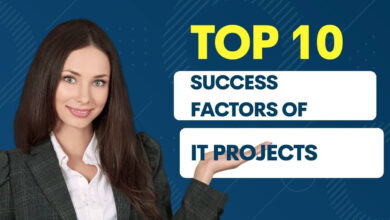What is the Burke-Litwin Performance and Change Model?
Change is inevitable in any organisation, but not every change brings optimised performance. Successful change requires a systematic understanding of what influences performance and how change in one area can affect others.
In the early 1990s, W. Warner Burke and George H. Litwin developed The Burke-Litwin Model of Organisational Performance and Change, which provides a comprehensive framework to examine these interrelationships. It identifies key variables affecting performance while also illustrating their cause-and-effect relationships, which makes this model a pragmatic aid for change management.
In this article, we will discuss the elements of the Burke-Litwin performance and change model and how it can be used to improve organisational success.
Factors Driving Change in Burke-Litwin Model or 12 Dimensions of the Model
External Environment
These are the different external economic, political, technology, innovation, and competition issues linked to an organization. Usually, this is where change occurs, pushing management to rethink the strategy or the arrangements.
For instance, Nokia experienced a decline in market share and revenues in the early 2010s. This was mainly due to a shift in the external business environment—specifically the rise of smartphones and the adoption of iOS and Android operating systems. Nokia lost out on a significant share of the market due to their lack of adaptability to external technological change.
Mission and Strategy
The mission of an organisation explains why it exists. It is the basis for everything that should be done. The strategy then explains, in broad strokes, how the organisation will do what it needs to do to reach its mission. A lot of the time, the strategy will be made because of environmental changes and will have a big effect on your work. As a change manager, you need to know about strategy changes and be able to tell your staff what they mean.
As an example, Satya Nadella at Microsoft initiated a change in culture and strategy and we can call that a transformation. He moved the company from a product-centric to a cloud-first approach which triggered collaboration and innovation within silos.
Leadership
This looks at the attitudes and actions of senior colleagues and how the organisation sees those actions. The top team will greatly impact how changes are made and how people in the organisation react to them. Does your team think that senior coworkers are committed to change, or is it just another idea that will be forgotten in six months?
Organisation Culture
Culture in an organisation can be thought of as “the way we do things around here.” It looks at the beliefs, norms, values, and practices that are most common in an organisation. Cultural change does not happen overnight. It changes over time because many other things in the organisation also change. As a manager, you should keep in mind what you want the organisation to be like, how you want people to act (and how they shouldn’t act), and what the organisation thinks is important. You need to ensure that your actions always match these standards, and that you “walk the walk.”
Structure
Changes in the organization’s strategy can often lead to changes in its setup. This can change the way people work, their relationships, and their responsibilities. Your job is to figure out how the structural change will affect things and make sure your team knows why it needs to happen and what it means for them.
Work Unit Climate
This considers how employees feel about their immediate coworkers and the work environment. Our immediate work environment often shapes how we feel about the organisation and how satisfied we are with our jobs.
Changes to the immediate work environment need to be handled with care because they will likely make employees feel and act differently. This is especially true when change means moving to a new place, changing the people who work there, or changing the terms of service, such as the hours they work.
Task Requirements and Individual Skills
When things change at a higher level in an organisation, it’s often necessary to change how work is done and what skills are on the team. As the change manager, you must determine if the team has all the right skills, if they can learn them, or if you need to bring them in from somewhere else.
Individual Needs and Values
When people join or leave a team, it can change how it works. In a perfect world, we’d be able to find people who are just right for our teams in terms of personality, skills and the mix of those skills. But in real life, this isn’t always possible. It’s your job to find any risks in this area and reduce them as much as possible.
Employee Motivation
Thinks about how important individual and organisational goals are. Motivation is the key to change that works. The real challenge of a change project is to keep people motivated throughout, especially since people don’t always like change.
Advantages of using the Burke-Litwin Casual Model
In contrast to most simply descriptive models, the model provides causal linkages. The listed essential criteria, as well as their interdependencies, have a high practical significance in practice. With the help of experts, consultants, and researchers, the model has been created and modified over time. Furthermore, the strategy has been put to the test for the past five years at British Airways, one of the world’s most prestigious airlines.
Disadvantages of using the Burke-Litwin Model
Only the model identifies the external environment as the primary cause of organisational change. Internal variables such as changes in senior management and changes in the firm’s strategy or mission are not considered probable fundamental causes.
The authors focused too much on leadership, corporate culture, systems (especially remuneration), management practices, microclimate, motivation, individual needs and values, and performance, and not enough on the mission and strategy, structure, and relationship between the individual’s tasks and skills.
Conclusion
The Burke-Litwin Model serves as a strategic map for comprehending the interplay of deep and surface-level factors that influence organisational performance. With the ability to highlight the relationship between environmental shifts, internal processes, and tangible results, this model is immensely impactful.
An organisation applying this model is capable of accurately diagnosing the cause of underperformance, anticipating the consequences of critical decisions, and synchronising change initiatives with overarching strategic objectives. During these turbulent and multifaceted times, possessing such a theory-based perspective is not just helpful; it is indispensable.

